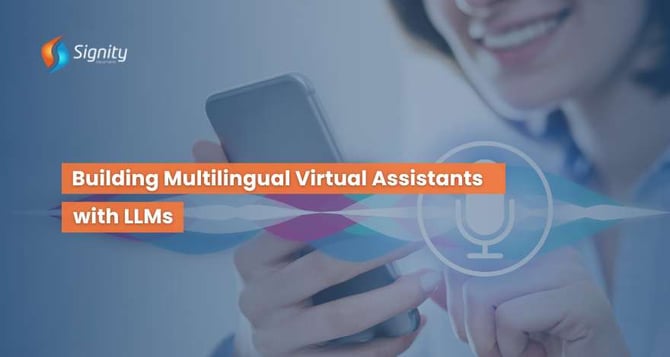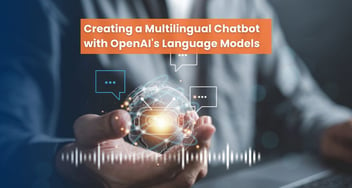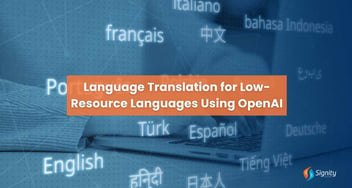Building Multilingual Virtual Assistants with Large Language Models
Discover the transformative potential of multilingual virtual assistants fueled by advanced language models. Break down linguistic barriers, enhance global connectivity, and foster inclusive communication across diverse cultures with our innovative solutions.

Introduction
In the ever-expanding landscape of digital interaction, multilingualism stands as a pivotal bridge, connecting diverse communities and fostering global communication.
With the advent of large language models (LLMs) like GPT-3, the potential to develop sophisticated virtual assistants capable of seamlessly navigating multiple languages has reached unprecedented heights.
This article embarks on a journey through the realm of multilingual virtual assistants, exploring how developers can harness the power of LLMs to create intelligent and culturally versatile digital companions.
The Significance of Multilingual Virtual Assistants
In a world characterized by linguistic diversity, the ability to converse fluently in multiple languages opens doors to enhanced accessibility and inclusivity.
Multilingual virtual assistants serve as invaluable assets in breaking down language barriers, facilitating cross-cultural communication, and broadening the reach of digital services.
From aiding travellers in foreign lands to enabling seamless collaboration in global enterprises, these assistants play a pivotal role in bridging linguistic divides and fostering interconnectedness on a global scale.
Ready To Transforming Communication Globally?
With our multilingual virtual assistants, businesses have seen a 30% increase in customer satisfaction.
Leveraging Large Language Models for Multilingualism
Large language models, such as GPT-3, have revolutionized natural language processing by exhibiting remarkable proficiency across various languages and dialects.
Leveraging these models, developers can imbue virtual assistants with the ability to comprehend and generate text in multiple languages, opening avenues for truly inclusive and accessible user experiences.
The versatility of LLMs enables virtual assistants to adapt dynamically to the linguistic preferences of users, ensuring fluid and intuitive interactions regardless of language barriers.
Technical Implementation: Building Multilingual Virtual Assistants
-
Model Selection and Training: Begin by selecting a suitable large language model capable of multilingual processing, such as GPT-3. Train the model on a diverse dataset encompassing multiple languages to enhance its proficiency across linguistic domains.
-
Language Detection: Implement language detection algorithms to identify the language of incoming user queries or messages. This information is crucial for routing queries to the appropriate language model for processing.
-
Translation Integration: Integrate translation APIs or libraries to facilitate seamless translation between languages. This enables the virtual assistant to provide responses in the user's preferred language, irrespective of the original language of the query.
-
Contextual Understanding: Leverage the contextual understanding capabilities of LLMs to ensure coherent and contextually relevant responses across different languages. By analyzing the context of conversations, virtual assistants can deliver more accurate and nuanced interactions tailored to individual user needs.
|
|
Applications of Multilingual Virtual Assistants
-
Global Customer Support: Virtual assistants equipped with multilingual capabilities can provide round-the-clock customer support in multiple languages, enhancing customer satisfaction and loyalty.
-
Language Learning: Serve as personalized language tutors, offering interactive language learning experiences tailored to the proficiency level and learning objectives of users.
-
Cultural Exchange and Exploration: Facilitate cultural exchange and exploration by providing insights, recommendations, and information about diverse cultures and languages.
-
Cross-Border Collaboration: Foster seamless collaboration and communication in multinational enterprises by enabling employees to interact effortlessly in their preferred languages.
Considerations and Best Practices
-
Data Privacy and Localization: Ensure compliance with data privacy regulations and localize virtual assistants to align with cultural sensitivities and linguistic nuances across different regions.
-
Continuous Training and Adaptation: Regularly update and retrain language models to adapt to evolving linguistic trends and user preferences, thereby maintaining optimal performance over time.
-
Accuracy and Consistency: Strive for accuracy and consistency in language processing and translation to deliver high-quality user experiences and build trust with users.
-
Cultural Sensitivity: Sensitize virtual assistants to cultural differences and nuances to avoid misinterpretations or unintended offence in cross-cultural interactions.
Our Company's Role in Multilingual Virtual Assistant Development
At Generative AI Development Company, we specialize in the development of cutting-edge multilingual virtual assistants powered by state-of-the-art large language models. Our team of experienced ChatGPT Developers is dedicated to crafting tailored solutions that seamlessly integrate language processing, translation, and contextual understanding capabilities.
Deliver Unparalleled Customer Experiences
Our virtual assistants, leveraging Generative AI and ChatGPT technology, provide round-the-clock support in multiple languages.
Whether you require multilingual customer support solutions or innovative language learning platforms, our expertise ensures that your virtual assistant surpasses expectations in linguistic versatility, accuracy, and user experience. Partner with us to unlock the full potential of multilingual virtual assistants and embark on a journey towards global connectivity and inclusivity.
Conclusion
Building multilingual virtual assistants with large language models represents a transformative leap towards a more connected and inclusive digital ecosystem. By harnessing the power of LLMs, developers can create virtual assistants that transcend linguistic barriers, empowering users to engage effortlessly in their preferred languages. As we continue to embrace linguistic diversity and cultural richness, multilingual virtual assistants stand as beacons of unity, fostering understanding and collaboration across the global community.


%201-1.webp)


.png?width=344&height=101&name=Mask%20group%20(5).png)


















